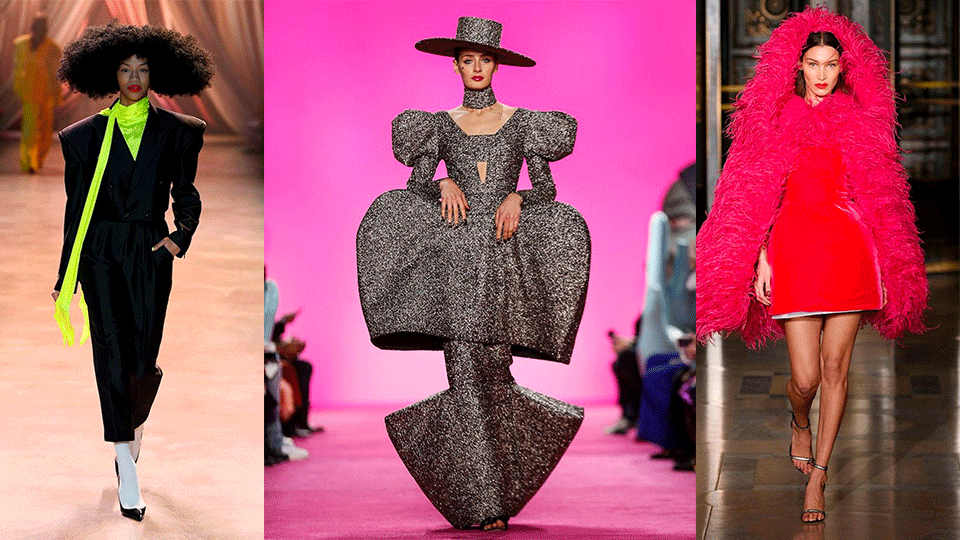- À New Wave to Fashion, À New Way of Living. Download Now on iOS Android Canada SS22
- hello@alahausse.ca
Historical Fashion: Designing Costumes for History

Fashion Fanatic: What Makes us Addicted to Fast Fashion?
January 10, 2023
How Digital Eco-Labels On Our Clothes Could Transform The Way We Shop
January 10, 2023- #HAUSSEPEOPLE
- #WEARYOURPURPOSE
- 2022 trends
- Affordable
- Circular Economy
- Circular Fashion
- Circular Fashion Economy
- Conscious Buying
- Consumers
- costumes
- Design
- Designers
- Eco-friendly Fashion
- Fair Trade
- Fashion
- Fashion award
- fashion design
- Fashion Designer
- Fashion Industry
- Fashion innovation
- gilded age
- historical
- historical fashion
- history
- Innovation
- movies
- Sustainability
- Sustainable Fashion
- Sustainable Global Goals
- vintage

Written by: Dylan Stoll
The fashion industry and the film industry have been inextricably linked since the beginning of their relationship. As new movies are being produced, costume designers work tirelessly to bring to life the vision of the film, assigning relatable fashion pieces for actors and actresses that eventually go on to influence style choices in those that watch the film. It’s a mutual agreement that the two work hand in hand, delivering an end product that is not only believable, but inspiring, and influential.
But what about historical pieces? Historical fashion isn’t exactly something that’s picked up by the masses, nor is it an easy task to find clothing that fits a particular century of humanity’s past. What goes into delivering accurate renditions of historical attire?

Director's Cut of Historical Fashion
When approaching a film, not only are costume designers required to meet the expectations of the period in history, they are also expected to meet the requirements of the director’s vision. This means that many of the costumes you’ve likely seen in period pieces are not only a reflection of the time period, but a reflection of a modern approach. As such, most costumes are not 100 percent accurate to the time period. For example, in Shakespeare in Love, the tights that the actors would wear were deemed far too unflattering, and so Sandy Powell, the costume designer, decided to make their jackets longer to cover the tights. Little decisions like this, though largely unnoticeable by the masses, occur all the time, lessening the verisimilitude, but not in a way that the average person could so easily detect.
A Subjective Window into Historical Fashion
This happens all the time in period pieces, but it’s not only due to modern proclivities; the real issue lies in interpretation. If costume designers were to solely rely on written works of fashion during a time period, say a fashion magazine from the late 1800’s, they would be misled into believing that everyone dressed the way it was shown in the book. This was not the case. As many today do, we look at a fashion magazine and we choose which clothing items we enjoy the most. Sure, some may follow a model’s exact clothing choices, but for the most part we make decisions based on our own subjective desires.


Making their own Fashion Decisions
Though some may argue that the expression of individual identity was less prominent in the past, they’d be wrong. It may have been less obvious, but everyone was choosing their own approach to the way they dressed. Be it in minor, less obvious ways or in a more explicit manner, individual fashion expression is no new phenomena. For example, when Oscar-winning costume designer Alexandra Byrne was asked to take on the challenge of creating costumes for the show Emma, a historical drama set in the 1800’s. In order to understand fashion at the time, Byrne would look through fashion plates of the same era. Fashion plates were the old-school way of displaying fashion options in magazines. They were individual designed and etched, and not only that, they were dyed with dyes that were also individually prepared. This means that not only is the plate itself a subjective interpretation of fashion, but the dyes were too. On top of that, most people in the past would take those plates and use them not as an image to copy exactly, but as a general framework for the sewing and amount of effort they would put into making their own clothing. As Byrne said herself in an interview with Vogue, “Twenty women could look at the same fashion plate image and you’d get 20 interpretations,”
Increasing the Accuracy of a Historical Vision
So how do they increase their ability to accurately represent something so subjective and hidden from the present? Through intensive study of written journals and letters, many costume designers are able to acquire a real, raw vision of how one may have dressed in the past. In her interview, Byrne looked back on a quote from an individual who had written about the starched linen cravat and collar, a popular fashion accessory of the time meant to display wealth and status. “The cravat and collar [were] so starched that he [had] to point his chin up to the ceiling.” Excerpts such as this, though still a very subjective interpretation, provide the best window into the past that a historical costume designer can work with.


Careful, it's Vintage
But not all costumes are modern interpretations. Some are even chosen from a collection that is from the very time period in question. For example, Four-time Emmy nominated costume designer Paolo Nieddu worked on a show called “The United States vs Billie Holiday”, starring Andra Day. Amazingly, the designer was able to get his hands on an authentic vintage lamé dress, the kind made from threads that are over 80 years old. As he described in an interview with Vogue, the threading had to be reinforced in between takes of her running through the rain so that the dress didn’t simply fall apart while she was filming.
Nieddu also commented on the rarity of these items, stating that many of the vintage clothing and accessories had no replacements, and so filming with these pieces was done so with extreme caution. In one incident, Nieddu recalled the mishandling of a vintage earring, one that flew off Day during a scene. To this date, the earring has yet to be recovered.
The Murky Window of Historical Fashion
The past is a difficult and murky window to look into, but modern interpretations do a fantastic job of imagining history in the most accurate and best way possible. These costume designers work with what they have, and in the end, they often deliver a product that is, as far as anyone concerned, a relatively on-point rendition of how people may have looked. But with all the layers of subjectivity, one cannot get nitpicky. No one interpretation will be historically identical because the past is not a picture to be redrawn, but a subjective view to be further interpreted. A costume designer can capture the vibe and emotion of a time period, but to deliver a product that is identical is an effort in futility. The past is in the past, never to return again, but we can certainly do our best to capture these moments lost to time, because why not? Historical pieces are intriguingly beautiful works of art, and at ÀLA.HAUSSE, we can’t wait until the next historical drama provides us with the inspiration to imagine the world of yesterday.

À New Wave to Fashion. À New Way of Living.
Your First and Last Sustainable AI and Social Powered P2P/B2C Multifunctional Ecosystem (BUY/SELL/RENT/LEND/ SWAP/GIFT), for Me and You.
Apple: https://apple.co/3F8EgcJ
Android: https://bit.ly/3f7jEY3
Via ÀLA.HAUSSE’s Multi-functional and Multi-purposeful Fashion Ecosystem- BUY/SELL/RENT/LEND mobile application, INDIVIDUALS & brands ( BETA) are encouraged to REBUY, RESELL, REUSE and UP-CYCLE their personal “Clossets” aka Clothing Assets. Through this consumerism habit shift we slow down the urgency on fashion carbon footprint, aiding sustainability as a whole.
Launching NOW on iOS Android Canada
Give me a read: shorturl.at/rIMT8
More stories on www.alahausse.ca, Medium & Hackernoon. Follow & Tag @ala.hausse
#ALAHAUSSE #WEARYOURPURPOSE #HAUSSEPEOPLE








